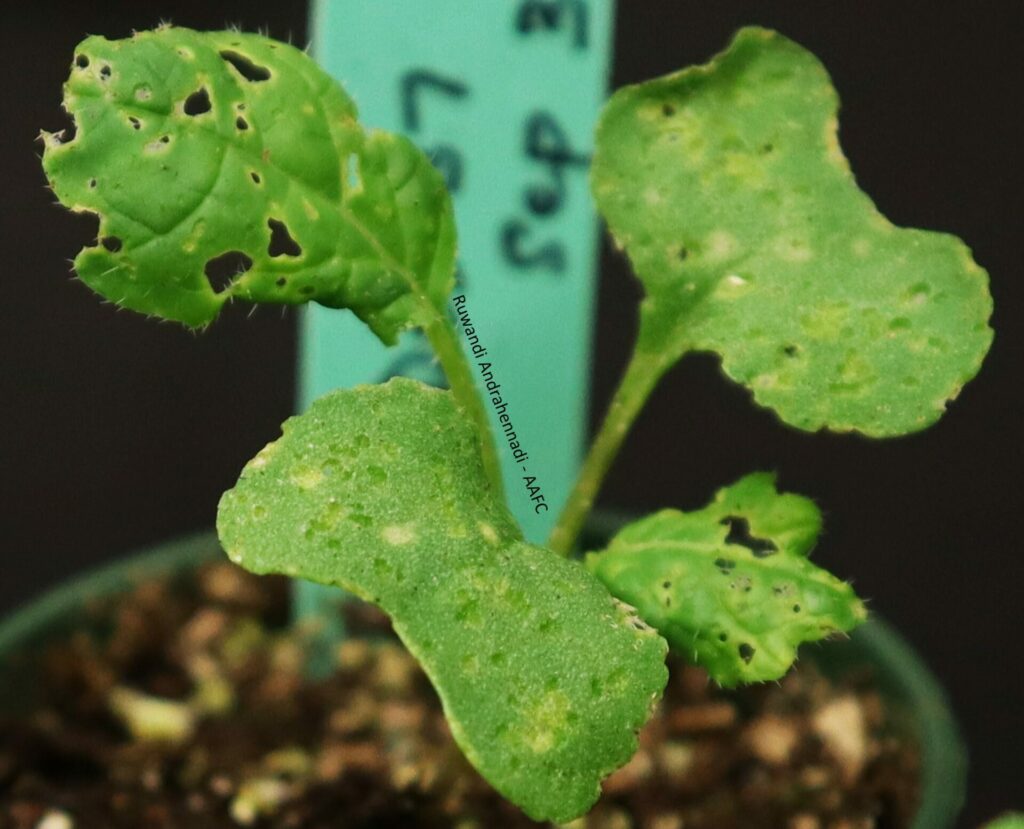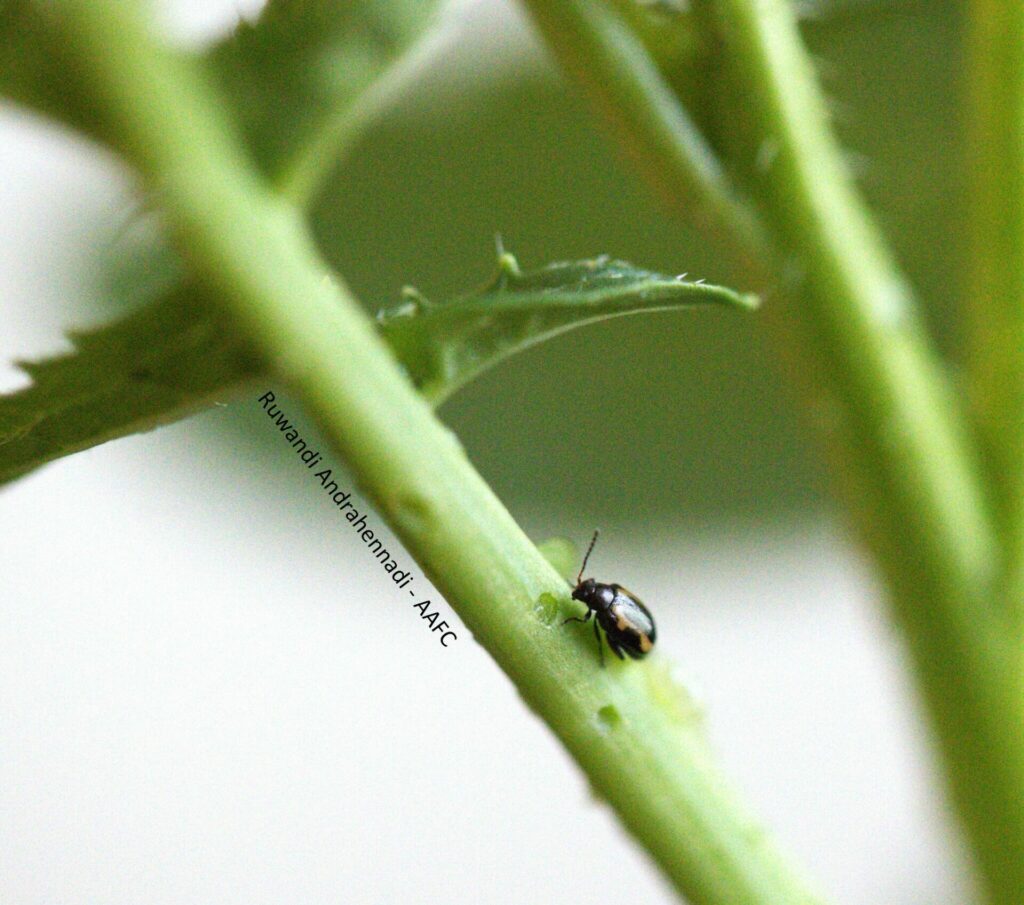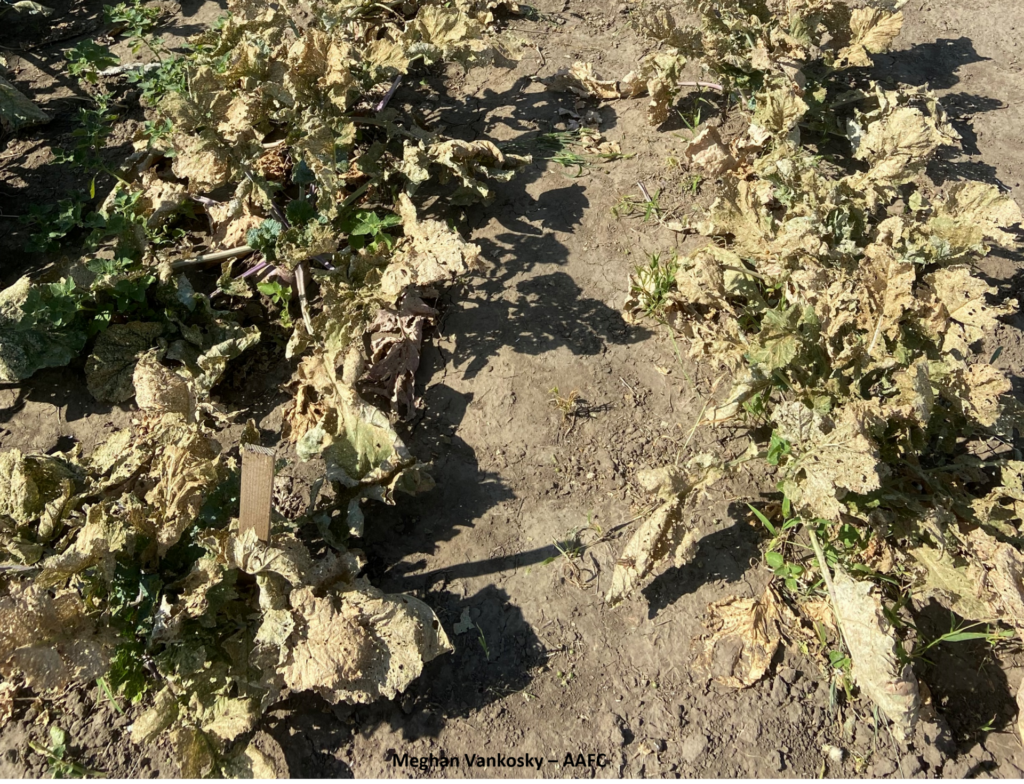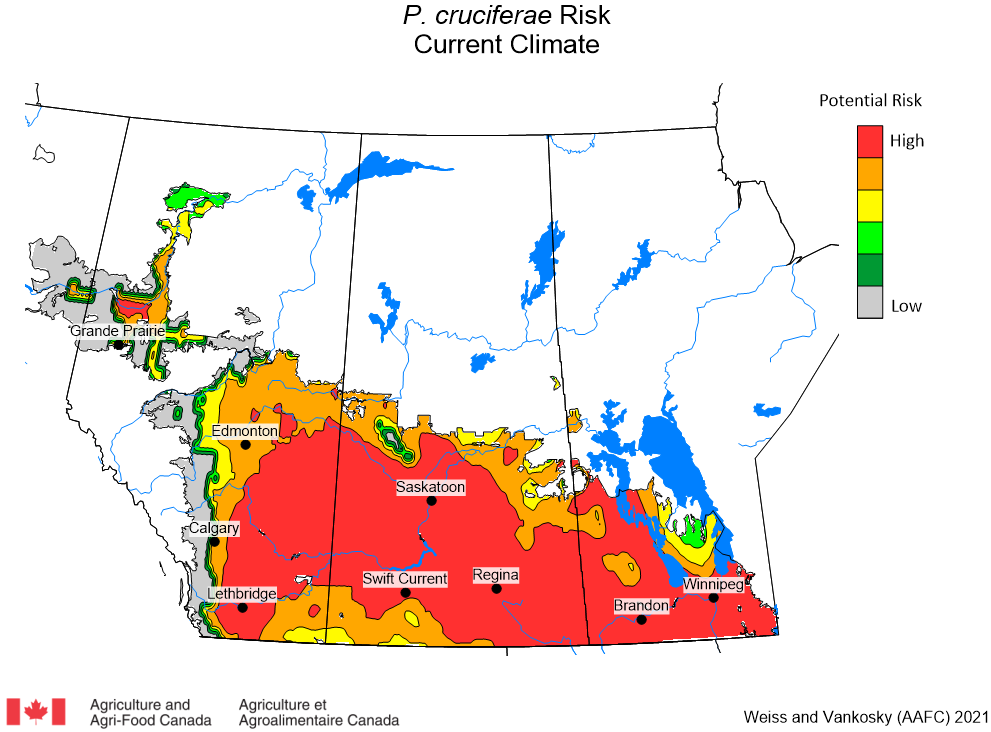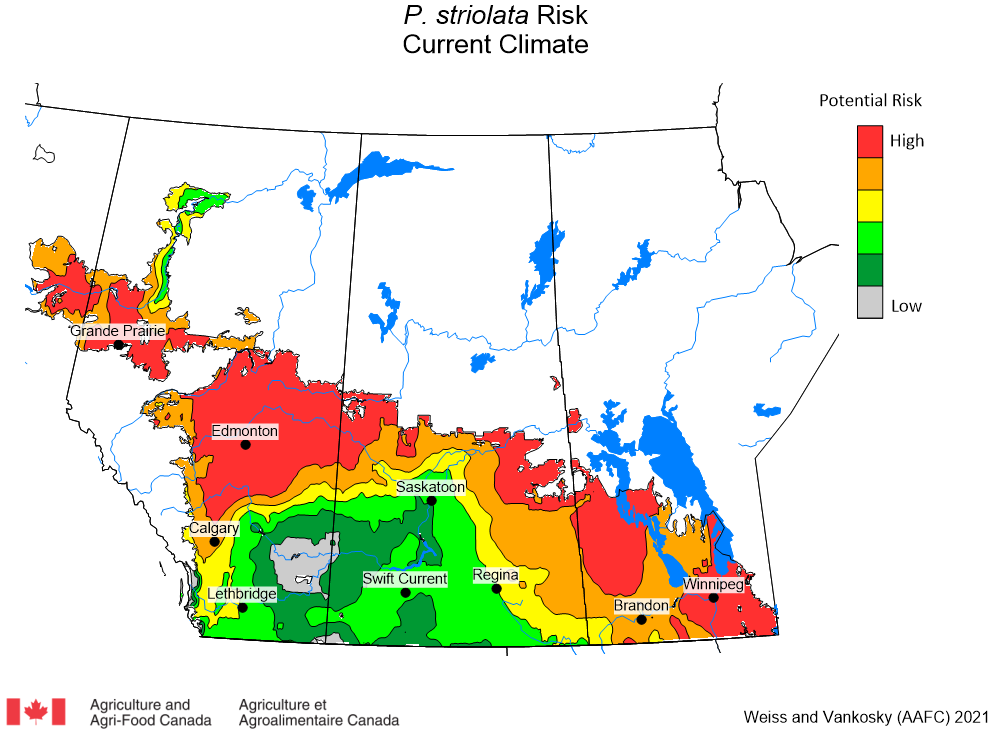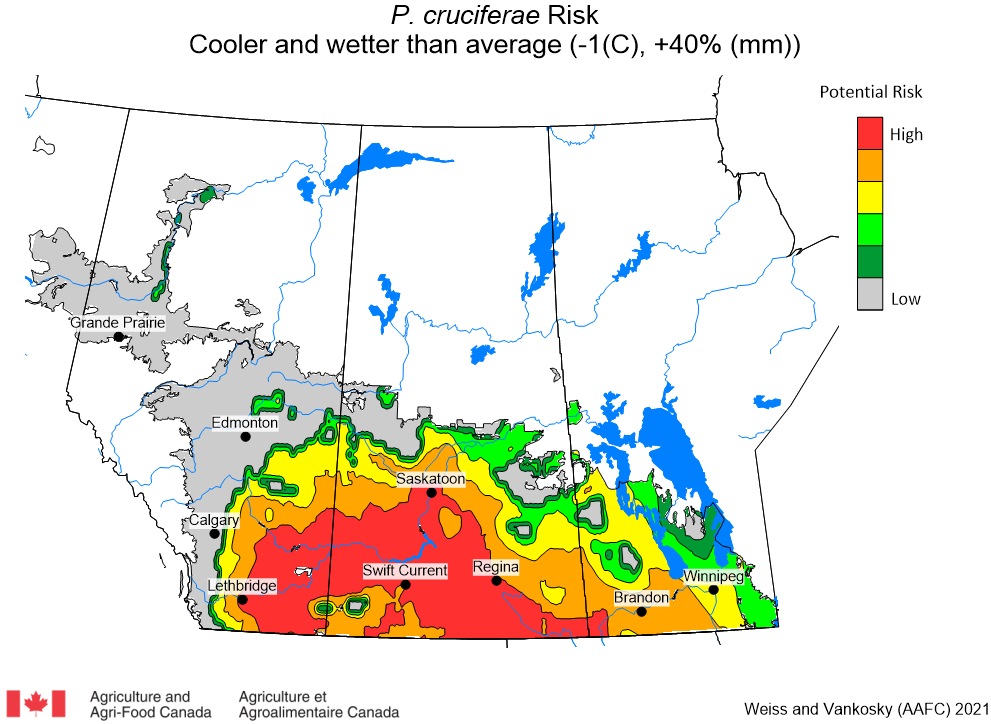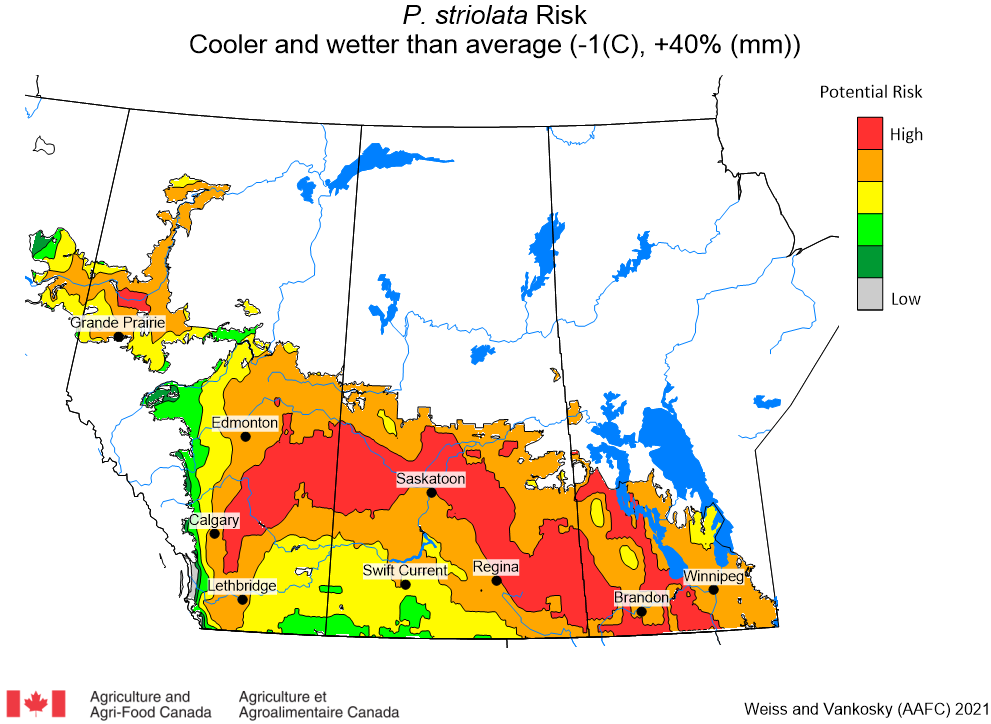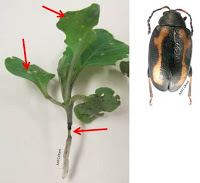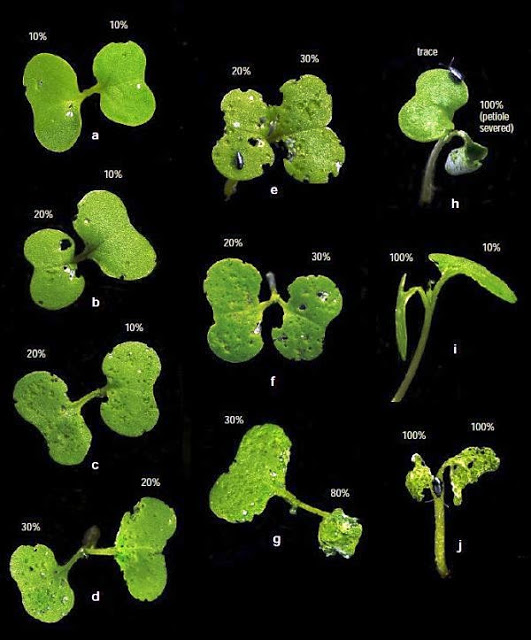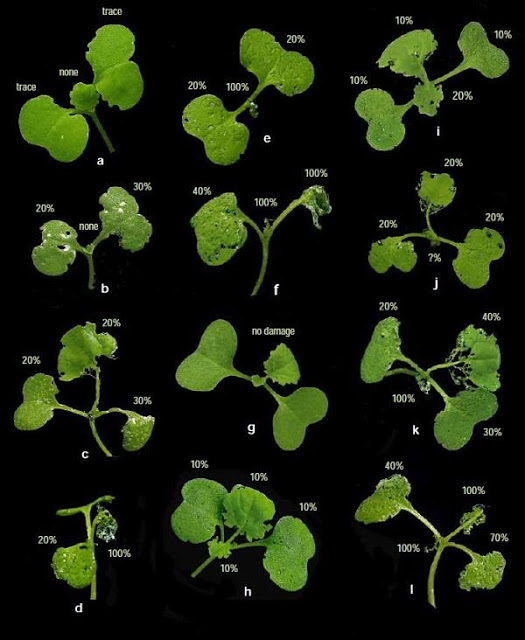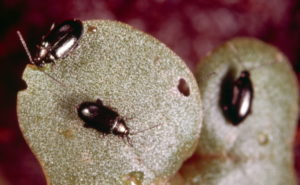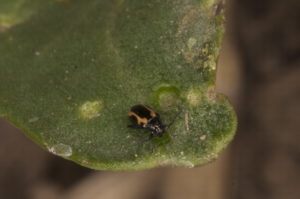Two species, the striped and crucifer flea beetles, are the most chronic and economically important insect pests of cruciferous field crops grown across western Canada. Both species are already active so prioritize field scouting in fields of emerging and seedling canola and mustard. All cruciferous crops and plants of any Brassicaceae are similarly attractive and can suffer damage from crucifer (P. cruciferae) and striped flea beetles (P. striolata).
Damage to emerging crops can progress very quickly when flea beetle densities are high, even within the same day! The cotyledon stage of canola is most vulnerable to flea beetle feeding.
Learn more about flea beetle damage in canola by reviewing the Insect of the Week (Wk 2 released May 13, 2024). Review photos of flea beetle feeding damage posted in the Weekly Update (Wk 02 – May 14, 2021) to help assess percent feeding damage and to apply the action threshold of 25 % leaf area of cotyledons. The Canola Council of Canada’s Canola Encyclopedia also features flea beetles along with an excellent visual guide to help estimate feeding damage.
Access biological and pest management information posted by Saskatchewan Agriculture, Manitoba Agriculture, or the Canola Council of Canada’s Canola Encyclopedia. Refer to the flea beetle page within the “Field Crop and Forage Pests and their Natural Enemies in Western Canada: Identification and management field guide” (Philip et al. 2018) as an English-enhanced or French-enhanced version.

